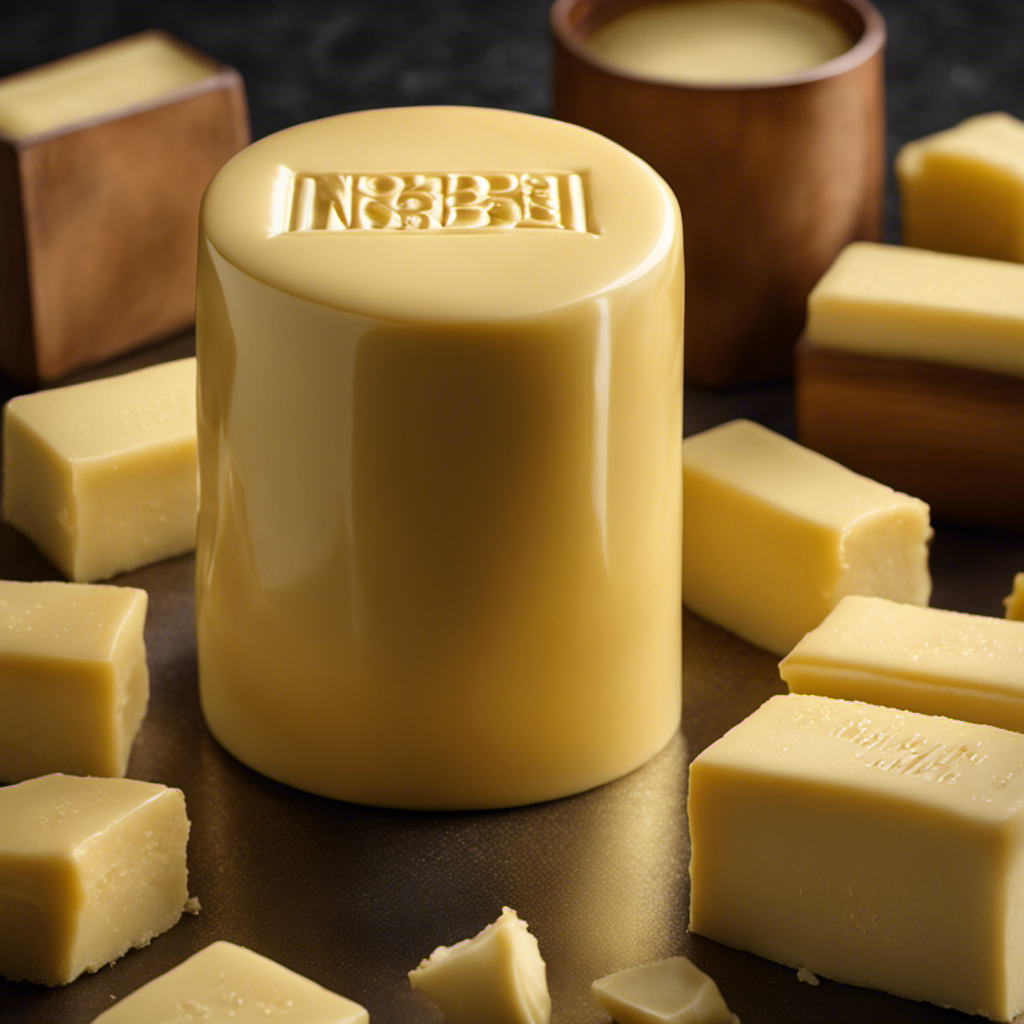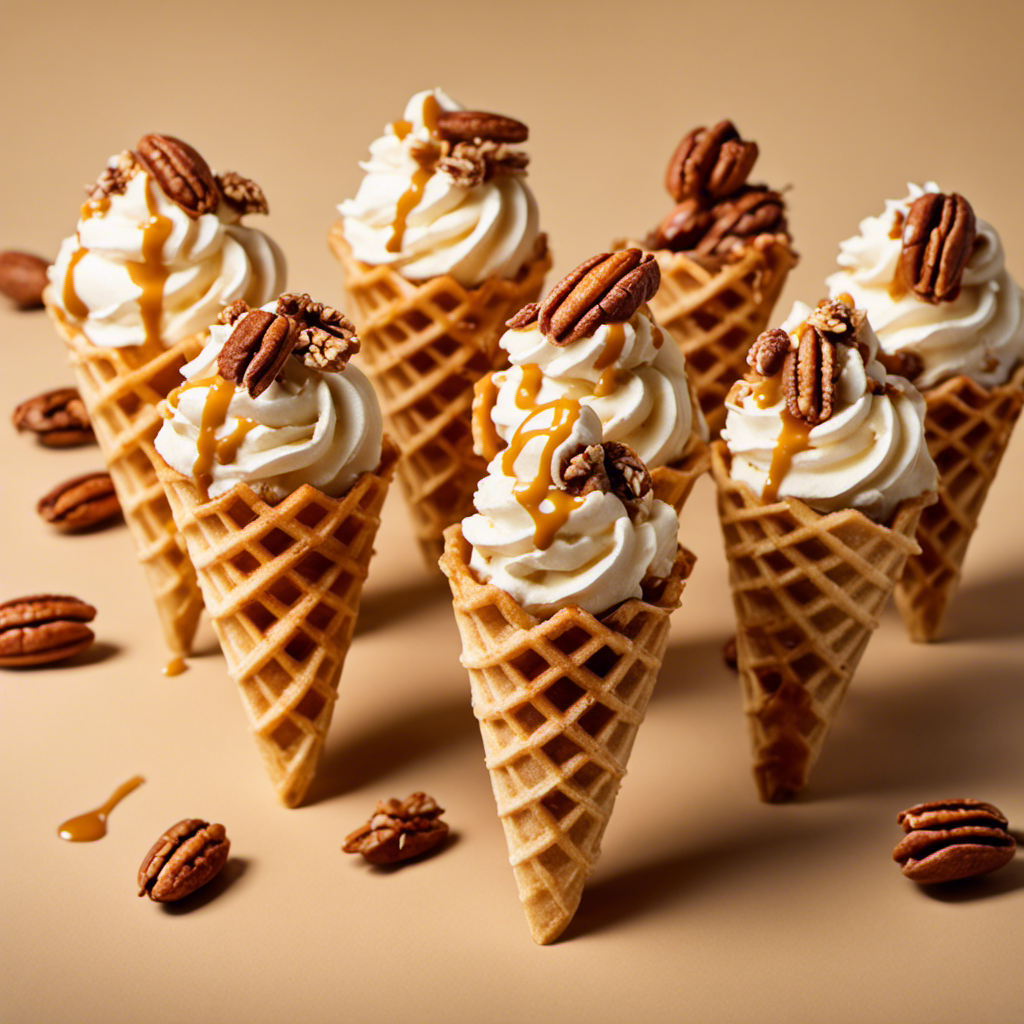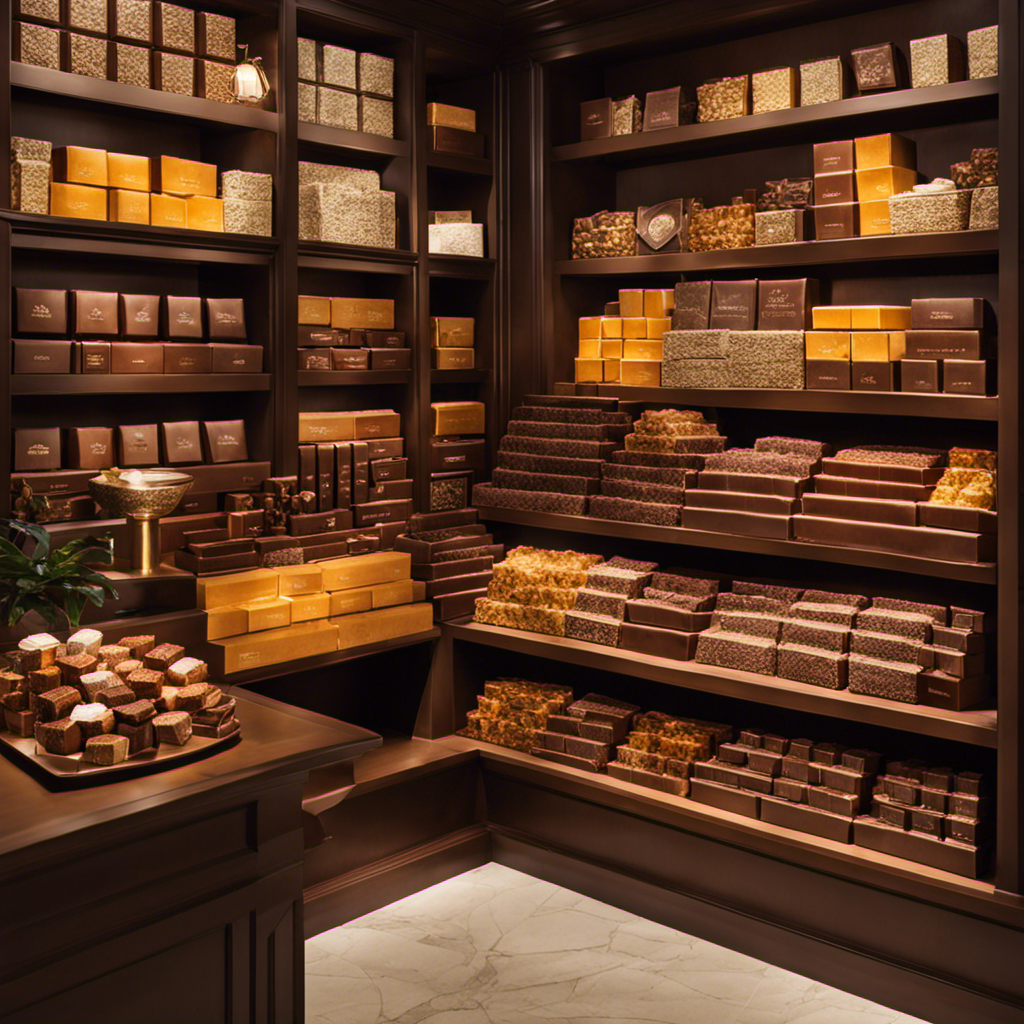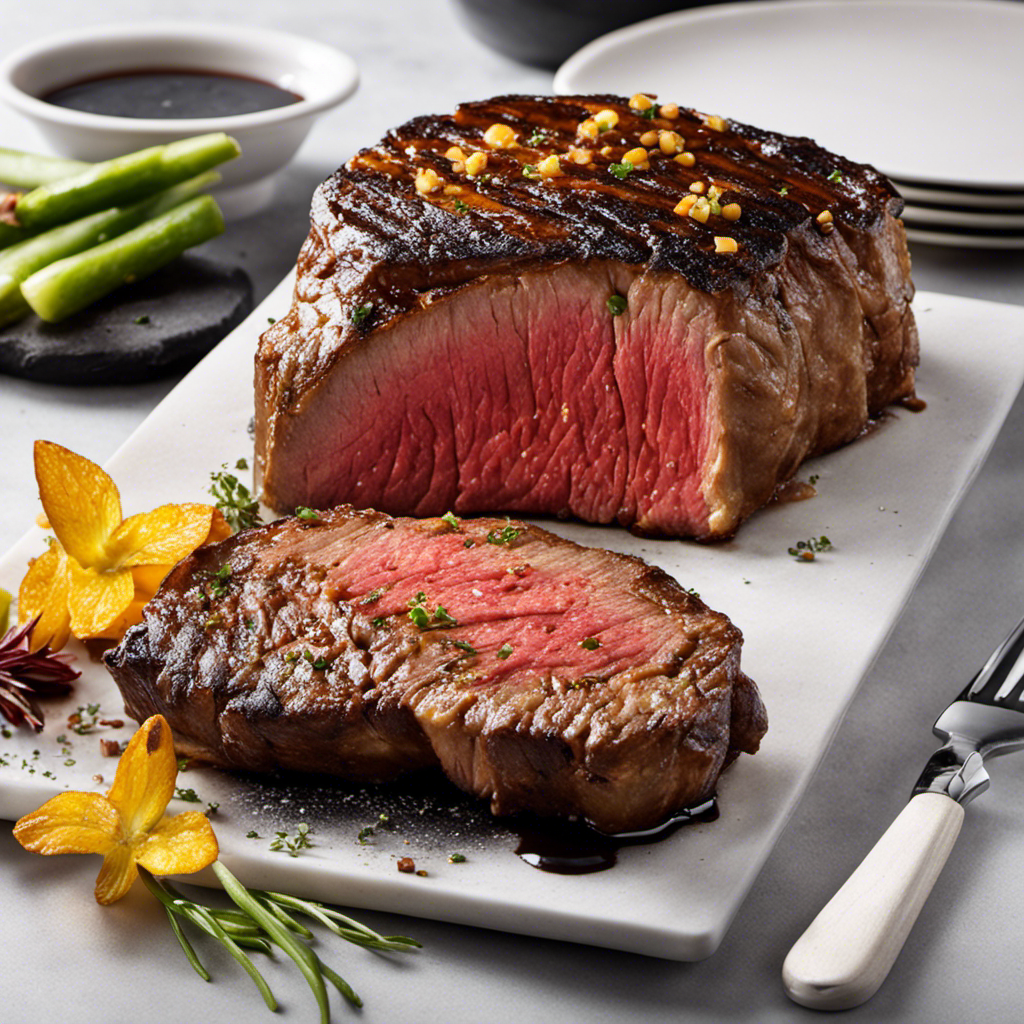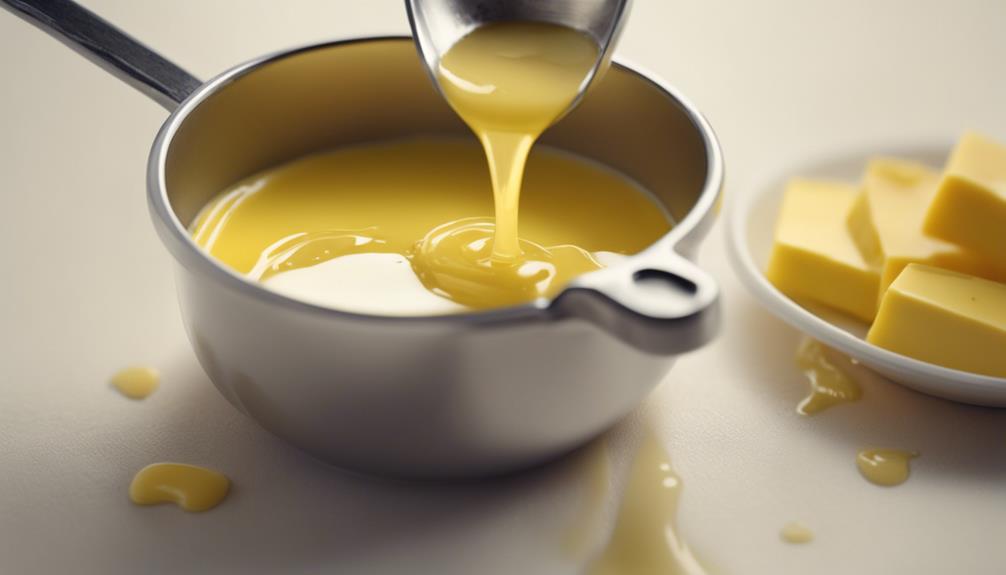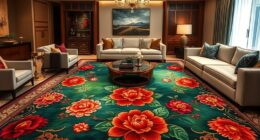I have always been curious about the phrase “nob of butter” and what it truly means. That’s why I decided to research the origins, characteristics, and culinary applications of this intriguing term.
In this article, we’ll explore the definition of a nob of butter, how to measure it accurately, and why using high-quality butter is essential.
Join me on this buttery adventure as we unravel the secrets behind the nob of butter and its historical significance.
Key Takeaways
- The term ‘nob of butter’ originated in medieval times when butter was a luxury item and refers to a small, rounded lump or ball.
- Butter has been revered in many cultures for its richness and flavor and has been used in traditional recipes, served at special occasions, and considered a symbol of prosperity.
- Butter is made by churning cream using traditional methods and has a creamy and rich texture, adding richness to dishes.
- Butter has various culinary applications, including enhancing flavor, creating rich sauces and pastries, sautéing vegetables, basting meats, and adding richness to baking and pastry making.
The Origins of the Term "Nob of Butter
Do you know where the term ‘nob of butter’ comes from? Well, let me enlighten you.
The origin of the term can be traced back to medieval times when butter was considered a luxury item. In those days, a ‘nob’ referred to a small, rounded lump or ball. So when someone referred to a ‘nob of butter’, they were talking about a small, rounded portion of this precious commodity.
The cultural significance of a nob of butter is also worth mentioning. In many cultures, butter has been revered for its richness and flavor. It has been used in traditional recipes, served at special occasions, and even considered a symbol of prosperity. Therefore, the term ‘nob of butter’ not only refers to a specific amount, but it also carries a sense of indulgence and importance.
Now that we know the origin and cultural significance of a nob of butter, let’s explore its definition and characteristics.
The Definition and Characteristics of a Nob of Butter
You might be wondering what exactly makes a nob of butter unique and distinct. Well, let me tell you.
A nob of butter is a small, rounded portion of butter that is typically used for cooking or spreading on bread. Here are a few characteristics that set a nob of butter apart:
-
Creamy and rich: A nob of butter is known for its smooth and velvety texture, making it perfect for adding richness to dishes.
-
Versatile: Whether you’re frying eggs, baking a cake, or simply enjoying toast, a nob of butter can be used in a variety of ways.
-
Natural and traditional: Butter has a long history of production, dating back centuries. It is made by churning cream, and its production methods have evolved over time.
-
Nutritional considerations: While butter adds flavor to dishes, it is important to note its impact on cholesterol levels. Moderation is key when consuming butter, as it is high in saturated fat.
Different Uses and Culinary Applications of a Nob of Butter
When it comes to cooking, understanding the melting point of butter is crucial. It determines the texture and consistency of your dishes.
Additionally, using butter as an ingredient can enhance the flavor profile of your meals, adding richness and depth.
However, for those looking for healthier alternatives, there are various butter substitutes available that offer similar taste and texture while being lower in saturated fat.
Melting Point for Cooking
If you want to melt butter for cooking, it’s important to know that the melting point of a nob of butter is around 90 to 95 degrees Fahrenheit. This means that when the temperature rises above this range, the butter will start to liquefy, transforming from a solid to a smooth and creamy liquid. Understanding the melting point of butter is crucial for achieving the desired consistency in your dishes.
Here are a few things to keep in mind:
- Butter melts quickly: Due to its low melting point, butter can melt rapidly once it reaches the right temperature.
- Be cautious of overheating: It’s essential to monitor the temperature carefully when melting butter to avoid burning or browning it.
- Melting butter enhances its flavor: As butter melts, it releases its rich, nutty aroma, enhancing the flavor profile of your dishes.
- Use melted butter for sautéing, baking, or drizzling: Once melted, butter becomes a versatile ingredient that can be used in various culinary applications.
Understanding the melting point of butter allows us to explore its flavor enhancement in dishes. Let’s dive deeper into how melted butter can elevate the taste of our favorite recipes.
Flavor Enhancement in Dishes
As butter melts, it releases its rich, nutty aroma, enhancing the flavor profile of dishes. This is why it is such a versatile ingredient in cooking. Its low melting point allows it to quickly melt and distribute its delicious flavor throughout a dish.
From sautéing vegetables to baking pastries, butter adds a depth of taste that is hard to replicate. Its applications in cooking are vast, making it a staple in many cuisines around the world.
In fact, butter holds cultural importance in various culinary traditions. It is used in French cuisine to create rich sauces and flaky pastries, while in Indian cuisine, ghee, a clarified butter, is a key ingredient in many savory dishes.
The melting point and flavor of butter truly make it a culinary treasure.
Butter Alternatives for Health
Using butter substitutes can be a healthier option for those looking to reduce their intake of saturated fat. As someone who is conscious of my health, I have been exploring various butter alternatives and have discovered some surprising benefits. Here are a few reasons why you should consider incorporating butter alternatives into your diet:
-
Lower in saturated fat: Butter alternatives are often made from plant-based oils, such as olive oil or avocado oil, which are low in saturated fat compared to traditional butter.
-
Rich in healthy fats: Many butter substitutes are high in monounsaturated and polyunsaturated fats, which are known to promote heart health.
-
Vegan-friendly: Butter alternatives are a great option for those following a vegan or dairy-free lifestyle, as they are made without any animal products.
-
Versatile and delicious: Butter alternatives can be used in a variety of recipes, from baking to sautéing, and they offer a similar taste and texture to traditional butter.
How to Properly Measure a Nob of Butter
To properly measure a nob of butter, you’ll want to use a kitchen scale for accuracy. It’s important to get the right amount of butter in your recipes to ensure the best results.
But why is it so important to measure butter accurately? Well, for one, the melting point of butter can vary depending on its freshness. Fresh butter has a lower melting point, which means it will melt more quickly when heated. This can affect the texture and consistency of your baked goods.
Using fresh butter also has other benefits, such as a richer flavor and smoother texture. So, next time you’re baking, be sure to measure your nob of butter accurately to achieve the best results.
The Importance of Using Fresh and High-Quality Butter for Nobbing
When it comes to nobbing, using fresh and high-quality butter is essential for achieving the best results.
Not only does it impact the taste and aroma of your dish, but it also plays a crucial role in preserving the nutritional value of your food.
The rich and creamy flavor of fresh butter enhances the overall experience, while ensuring that the essential vitamins and minerals are not compromised during the cooking process.
Taste and Aroma Impact
The taste and aroma of butter can greatly influence the overall flavor of a dish. When it comes to cooking, using the right butter can make all the difference. Here are a few things to keep in mind:
-
Quality Matters: Using high-quality butter ensures a rich and creamy taste that elevates your dishes.
-
Butter Substitutes: While butter substitutes can be used, they may not provide the same depth of flavor and texture.
-
Cholesterol Impact: It’s important to note that butter is high in saturated fat and can impact cholesterol levels. Moderation is key.
-
Enhancing Aromas: Butter has a unique ability to enhance the aromatic qualities of other ingredients, adding a delicious complexity to your recipes.
Understanding the impact of butter on flavor and cholesterol levels is just the beginning. Now, let’s explore how butter also plays a role in preserving the nutritional value of our food.
Nutritional Value Preservation
Preserving the nutritional value of our food is essential, and butter contributes to this process. Butter not only adds richness and flavor to dishes, but it also provides important nutritional benefits. When used in cooking techniques such as sautéing or baking, butter helps to retain the vitamins and minerals present in the ingredients. It acts as a carrier for fat-soluble vitamins, allowing them to be absorbed by our bodies more effectively. Additionally, butter contains essential fatty acids that are important for brain function and overall health. To give you a visual representation of the nutritional benefits of butter, here is a table:
| Nutrient | Amount per 100g |
|---|---|
| Vitamin A | 700 mcg |
| Vitamin E | 2.32 mg |
| Vitamin K | 7 mcg |
| Calcium | 24 mg |
Now that we understand the nutritional value of butter, let’s explore some creative ways to incorporate a nob of butter in recipes.
Creative Ways to Incorporate a Nob of Butter in Recipes
One way to amp up the flavor of your dishes is by incorporating a nob of butter into your recipes. Butter adds a rich and creamy taste that can take your dish from ordinary to extraordinary. Here are some creative ways to use butter in your cooking:
-
Sauté vegetables: Heat a nob of butter in a pan and sauté your favorite vegetables for a delicious and flavorful side dish.
-
Baste meats: Basting meats with melted butter helps to keep them moist and adds a delicious buttery flavor.
-
Make a compound butter: Mix softened butter with herbs, spices, or garlic to create a flavorful compound butter that can be spread on bread, melted over steak, or tossed with pasta.
-
Finish sauces: Add a nob of butter to your sauces at the end of cooking to give them a velvety smooth texture and a rich, buttery taste.
The Role of a Nob of Butter in Baking and Pastry Making
Using a dab of butter in baking and pastry making can enhance the richness and flavor of your sweet treats. Not only does it add a velvety smoothness to your doughs and batters, but it also contributes to the overall texture and mouthfeel of your finished products.
One important aspect to consider when using butter is its melting point. Butter has a relatively low melting point, around 90°F (32°C), which means it melts quickly during the baking process, creating pockets of buttery goodness within your pastries.
Additionally, butter is known for its high nutritional value, containing essential vitamins and minerals like vitamin A and calcium. Incorporating a nob of butter in your recipes not only adds flavor but also provides some nutritional benefits.
Now, let’s explore the difference between a nob of butter and other butter forms like stick and block, to understand how they can be used interchangeably in recipes.
The Difference Between a Nob of Butter and Other Butter Forms (e.g., Stick, Block
When it comes to using butter in the kitchen, size and shape differences can make a big impact.
A nob of butter, for example, is typically smaller and rounder than a stick or block of butter. This can affect how it is used in recipes and the overall convenience factor in the kitchen.
Size and Shape Differences
There’s a noticeable difference in the size and shape of various nobs of butter. When it comes to nobs, they can vary in size, ranging from small, dainty ones to large and robust ones. Some are perfectly round, while others may have irregular shapes, resembling a misshapen ball. The size and shape of nobs can depend on factors such as the manufacturer’s preference or the cultural variations in different regions.
- Some nobs are small and compact, perfect for individual servings or spreading on toast.
- Others are larger and more substantial, ideal for baking or cooking.
- Some nobs have a smooth, uniform shape, while others may have ridges or a textured surface.
- In certain cultures, nobs may be molded into decorative shapes or embossed with intricate patterns, adding an artistic touch to the dining experience.
The melting point range of nobs of butter can also vary depending on their size and thickness. Smaller nobs tend to melt quicker due to their increased surface area, while larger nobs may take longer to melt entirely. These size and shape differences in nobs of butter contribute to the diverse culinary experiences and cultural traditions around the world.
Usage and Convenience Factors
In terms of usage and convenience, it’s important to consider factors such as the packaging, spreadability, and storage options for butter.
When it comes to measuring techniques, most people rely on tablespoons or grams to ensure accurate portions. However, some butter brands also offer pre-measured sticks, making it even easier to use.
The spreadability of butter can greatly affect its convenience. Soft and spreadable butter is easier to use for spreading on bread or cooking.
On the other hand, the packaging should be considered for easy storage and access.
As for health benefits, butter contains essential vitamins and minerals, but should be consumed in moderation due to its high saturated fat content.
Overall, considering these factors can enhance the usage and convenience of butter in our everyday lives.
Historical Significance and Cultural References of a Nob of Butter
The historical significance of a nob of butter can be seen in its cultural references. Throughout history, butter has played a crucial role in various cultures around the world. Here are a few examples of its historical origins and cultural significance:
-
In ancient Egypt, butter was used as an offering to the gods and was considered a symbol of fertility and abundance.
-
In medieval Europe, butter was highly valued and often used as a form of currency or payment for rent.
-
In traditional Indian cuisine, ghee, a form of clarified butter, is used extensively for its rich flavor and medicinal properties.
-
In American culture, butter has become a staple ingredient in many classic dishes, such as buttered popcorn and buttercream frosting.
Understanding the historical origins and cultural significance of a nob of butter allows us to appreciate its role in different societies and the impact it has had on culinary traditions.
Now, let’s explore some tips for properly storing and preserving a nob of butter.
Tips for Properly Storing and Preserving a Nob of Butter
To properly store and preserve a nob of butter, it’s important to keep it in an airtight container.
Butter, with its rich flavor and creamy texture, is a versatile ingredient that adds a delicious touch to any dish. Unlike margarine, butter is a natural product made from milk or cream, and it contains beneficial nutrients like vitamins A, D, E, and K.
Another advantage of using butter is its higher melting point, which makes it more suitable for cooking and baking.
If you want to add some extra flavor to your butter, you can easily make flavored butter at home. Simply mix in herbs, spices, or even citrus zest into softened butter, then refrigerate it until it solidifies again.
This flavored butter can be used on toast, grilled meats, or vegetables, adding a burst of taste to your meals.
Exploring Alternative Options for a Nob of Butter in Vegan and Dairy-Free Cooking
If you’re looking for a vegan or dairy-free alternative in your cooking, there are plenty of options available to replace butter. As someone who follows a plant-based diet, I have explored various vegan butter alternatives and learned some dairy-free cooking techniques along the way.
Here are a few options you can try:
-
Coconut Oil: This versatile oil has a rich and creamy texture that works well in baking and sautéing.
-
Avocado: Mashed avocado can be a great substitute for butter in spreads, dressings, and even in baking recipes.
-
Nut Butters: Almond butter, cashew butter, and other nut butters can add a delicious, nutty flavor to your dishes.
-
Applesauce: When baking, using unsweetened applesauce can replace butter while keeping your treats moist.
These vegan butter alternatives, combined with dairy-free cooking techniques, can help you create delicious and satisfying meals without sacrificing flavor or texture.
Frequently Asked Questions
Can a Nob of Butter Be Used as a Substitute for Other Forms of Butter, Such as a Stick or Block?
A nob of butter can be a versatile substitute for other forms of butter in recipes. It offers the benefits of easy portioning and quick melting, making it perfect for sautéing, spreading, or adding a creamy touch to dishes.
Are There Any Cultural References or Historical Significance Associated With the Term ‘Nob of Butter’?
Cultural significance and historical references give the term "nob of butter" a rich context. People have used it for generations, and it’s interesting to explore how this simple phrase has become a part of our culinary traditions.
What Are Some Tips for Properly Storing and Preserving a Nob of Butter?
When it comes to storing and preserving butter, there are a few tips I’ve learned. First, keep it in an airtight container in the fridge. Second, wrap it in wax paper or foil for extra protection. These steps will help maintain its freshness and prevent it from absorbing any unwanted odors.
Are There Any Alternative Options for a Nob of Butter in Vegan and Dairy-Free Cooking?
Vegan butter alternatives are a great option for dairy-free cooking. They provide the same creamy texture and rich flavor as a nob of butter, but without any animal products. It’s a delicious and cruelty-free choice!
Can a Nob of Butter Be Used in Baking and Pastry Making, and if So, What Role Does It Play in These Processes?
In traditional baking, a nob of butter adds richness and flavor to pastries and dough. However, in modern techniques, alternatives can be used for a dairy-free option without sacrificing taste or texture.
Conclusion
As I sit here, contemplating the wonders of a nob of butter, I am transported to a place of culinary delight.
The golden hue, the creamy texture, and the tantalizing aroma all converge to create a symphony of flavor that dances on the taste buds.
It is a small but mighty ingredient, capable of transforming the simplest of dishes into works of art.
So, next time you encounter a nob of butter, embrace its essence and let it take you on a journey of gastronomic bliss.
